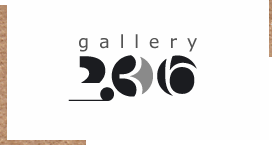October - December 2007. Gallery 2.36
The gallery presentation project includes works by five Moscow
artists of the second half of the twentieth century
Moscow's present-day art life is full of events: here and there exhibitions open; new art institutions, such as galleries, all sorts of foundations and private museums come into being; international art forums and fairs are held. The exhibition "In Lieu of an Introduction. Part I" presents works by five artists – Alexei Kamensky, Alexander Livanov, Alexander Maximov, Karl Fridman and Boris Chernyshev – and simultaneously marks the birth of a new Moscow gallery, 2.36.
The five exhibited artists are fine colorists, who managed to produce original color harmonies. All of them are excellent draftsmen, if the ability to convey in a motif something that escapes an ordinary absent-minded glance is anything to go by and if drawing means the ability to see things the way they are rather than the way they should be seen.
Another common feature lies outside the sphere of art studies and has to do with personality psychology. Although every one of the five artists lived and worked within Soviet culture almost without any conflict, he was in his heart of hearts independent of the surroundings, despite the fact that the surrounding people were intolerant of other people's independence.
This detachment from the cultural context was not defiant or demonstrative and yet quite obvious and definite. The five artists preferred to live by their own laws rather than by those of the society around them regardless of self-denial involved. Every one of them was consciously preoccupied with his work or craft, if you will, attaching special importance to some particular dot, line or brushstroke. Without that brushstroke, dot or line the inner harmony, which in fact dictated the choice, would have been destroyed. This is not to say, however, that genius and conformity are compatible things. Let me remark, though, that some artists, who tend to be inward-looking rather than outward, manage, paradoxically enough, to combine what seems incompatible – striking individuality with an insight into the essence of human existence. What is needed for that is a mere trifle, namely, a philosophical attitude to life, accord with oneself, talent and confidence that sooner or later there will be a viewer capable of understanding and appreciating what has been done. It seems that the time has come.
The organizers of the exhibition managed to comply with the three rules of unity, that of genre – original color graphic works are on show, that of location – the five artists were all Muscovites, and with some reservations that of time – all of them were born within the first thirty years of the 20th century and most of their works date to the 1960s.
The 1960s is a period of Russian culture increasingly referred to nowadays. That period proved to be so vivid and its influence so strong that a growing number of phenomena and hence names are being included in that context. Initially, the representatives of Austere Style were referred to as "the people of the 1960s". Later the term applied to the underground artists. In current usage it means anyone, who got a new lease on life in that period, as if having liberated oneself of the social maxims of official Soviet art.
All said, the exhibited artists do not exactly fit the description nor
any other classification cell carved by art critics for groups and
trends of 20th-century fine arts. They seem to slip away from those
cells, forcing art students to deal with every one of them separately.
Anna Chudetskaya





